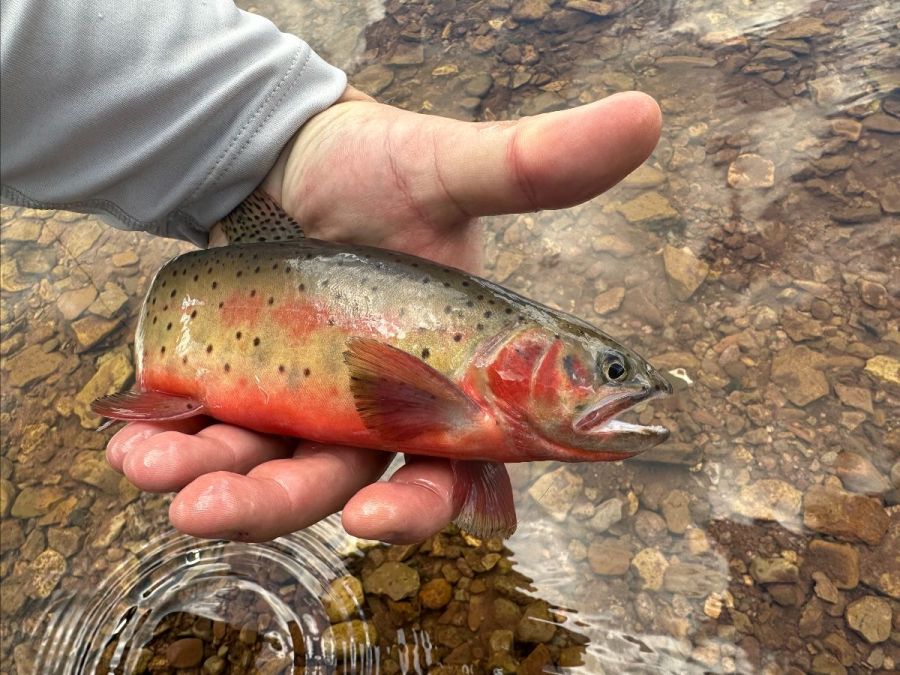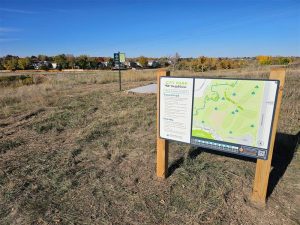[ad_1]

DENVER (KDVR) — As wildfires rage across Colorado, people have evacuated from their homes, while wild animals have had to flee from theirs. However, one nature dweller who can’t just pack up and go is the fish.
With water being a natural suppressor of fire, why does it matter?
Just ask Jim White, the Southwest Region Senior Aquatic Biologist for Colorado Parks and Wildlife, and Clay Kampf, the San Juan National Forest Supervisory Aquatic Biologist, who rescued over 250 cutthroat trout from the path of the Stoner Mesa Fire.
“We have seen the impacts fire can have on our rivers, streams and this important fish habitat firsthand. When you’ve got a rare or unique lineage of fish thriving in an area and suddenly they are threatened by a wildfire, we feel it is important to Colorado’s natural heritage to step in and do something to try to save those fish and that lineage,” said White in a press release.
CPW Durango aquatic biologist Kade Jackson met up with White and left from Durango to Rico when the fire was about 3,600 acres. The area they traveled to had a unique population of Colorado River cutthroat trout that the biologists were calling “Uncompahgre cutthroat trout.”
“Green lineage, or ‘Uncompahgre,’ Colorado River cutthroat trout are recognized as the native cutthroat to the Upper Dolores, Gunnison and Colorado River basins,” said Jackson. “By analyzing fin clips from fish collected in Wildcat Creek, our aquatic research team has identified rare genetic markers that make this population unique to the genetic diversity of cutthroat within the Upper Dolores River basin.”
The biologists arrived at Wildcat Creek and worked with firefighters to access the areas they needed to travel to safely, as the operation was considered to be in the operational area of the fire.
After confirming safe conditions, the biologists used an electrofishing backpack and net setup. The fish are briefly stunned by a small jolt of electricity and gathered in the net.
Team exceeded capture goal, transferred fish to hatchery
The team was aiming for at least 250 captures, and walked away with 266, which were then put into buckets and taken about 165 miles to a hatchery. The fish are kept in an isolated unit to prevent disease and contamination.
Just two days after the fish had been relocated, the Stoner Mesa Fire ballooned to 7,132 acres.
“Because the headwaters of Wildcat Creek are located very close to the Stoner Mesa Fire, there is concern that the fire could impact the creek and negatively change the characteristics of the water, which could be extremely harmful to this unique species of trout,” Stoner Mesa Fire Operations Chief Brian Austin said. “Fire Operations leaders are doing all they can to protect Wildcat Creek and all of the watershed tributaries, but the potential threat to species like the Colorado cutthroat remains.”
Fish face several risks when near a wildfire, with something like fire retardant drops being a threat. The loss of vegetation near the banks of water can create circumstances where the banks become unstable and flood.
The flooding can lead to fine sediment and ash getting into the areas where fish lay eggs. The ash can also coat the fish’s gills and reduce the surface area to pull oxygen from and suffocate them.
After the fire is 100% contained and suppressed, the biologists will consider placing the fish back in the Wildcat Creek if water conditions allow it. A stream in the Dolores River Basin is also being considered for a potential relocation spot.
This marks the second time that White has completed a large fish recovery effort. He was part of the recovery of San Juan cutthroat trout during the 416 Fire that burned north of Durango in 2018. The fish was previously thought to be extinct, but the discovery of a population meant that they needed to get those fish out of there.
[ad_2]

Anthony Sutton is a business strategist and writer with a passion for management, leadership, and entrepreneurship. With years of experience in the corporate world, he shares insights on business growth, strategy, and innovation through management-opleiding.org.




